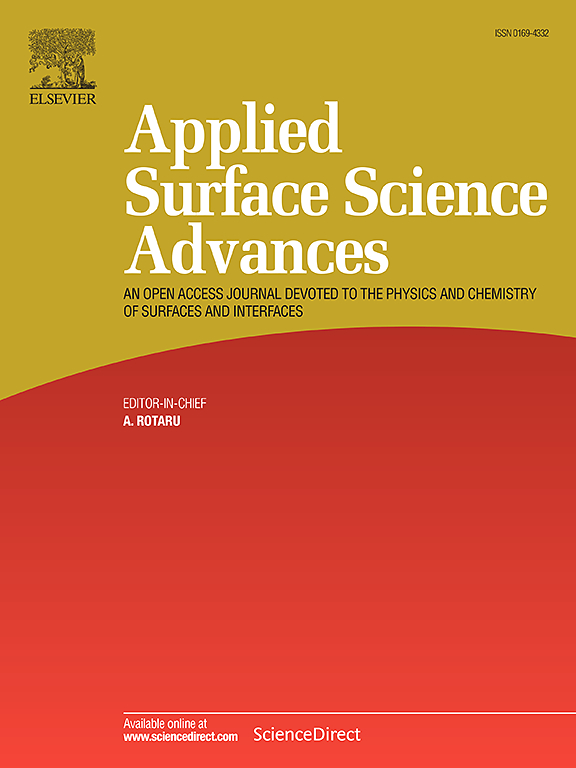Plasma-polymerized fluorocarbon Ag–Cu nanocomposites: Nanostructure optimization for superior SERS sensitivity
IF 7.5
Q1 CHEMISTRY, PHYSICAL
引用次数: 0
Abstract
Surface-enhanced Raman spectroscopy (SERS) enables the precise identification of molecules by enhancing the Raman signals of target compounds. This enhancement relies on the presence of Raman-active molecules on suitable nanostructures, where local surface plasmon resonance creates electromagnetic hotspots. This paper proposes a method to finely control the distribution of Ag and Cu nanoparticles within a plasma–polymer–fluorocarbon (PPFC) thin film by adjusting the sputtering power density to improve SERS performance. We fabricated Ag–Cu nanocomposite PPFC (CAP) thin films by sputtering at different mid-range-frequency sputtering densities, resulting in variations in the optical absorption wavelengths and changes in the Ag/Cu ratio, as confirmed by an X-ray photoelectron spectroscopy analysis. SERS measurements using rhodamine 6G demonstrated an enhancement factor (EF) of up to 108, further supported by finite-difference time-domain simulations based on nanostructures characterized by atomic force microscopy. We applied the prepared CAP thin films to contaminated surfaces and assessed their ability to enhance Raman signals for point-of-care detection. Despite a reduced EF due to the absorption of the thick polyethylene terephthalate substrate, the films generated identifiable Raman signals. This work highlights the potential of CAP thin films in creating flexible, tightly integrated, and highly sensitive SERS-active substrates.
等离子聚合氟碳银铜纳米复合材料:优化纳米结构,提高 SERS 灵敏度
表面增强拉曼光谱(SERS)可以通过增强目标化合物的拉曼信号来精确识别分子。这种增强依赖于拉曼活性分子在合适的纳米结构上的存在,其中局部表面等离子体共振产生电磁热点。本文提出了一种通过调整溅射功率密度来精细控制银和铜纳米粒子在等离子体-聚合物-氟碳(PPFC)薄膜内的分布以提高SERS性能的方法。通过x射线光电子能谱分析证实,在不同中频溅射密度下溅射制备了Ag - Cu纳米复合PPFC (CAP)薄膜,导致了光吸收波长的变化和Ag/Cu比的变化。使用罗丹明6G进行的SERS测量表明,增强因子(EF)高达108,基于原子力显微镜表征纳米结构的有限差分时域模拟进一步支持了这一结果。我们将制备的CAP薄膜应用于污染表面,并评估其增强拉曼信号的能力,以进行即时检测。尽管由于吸收了厚的聚对苯二甲酸乙二醇酯衬底而降低了EF,但薄膜产生了可识别的拉曼信号。这项工作突出了CAP薄膜在创造灵活、紧密集成和高灵敏度sers活性衬底方面的潜力。
本文章由计算机程序翻译,如有差异,请以英文原文为准。
求助全文
约1分钟内获得全文
求助全文

 求助内容:
求助内容: 应助结果提醒方式:
应助结果提醒方式:


